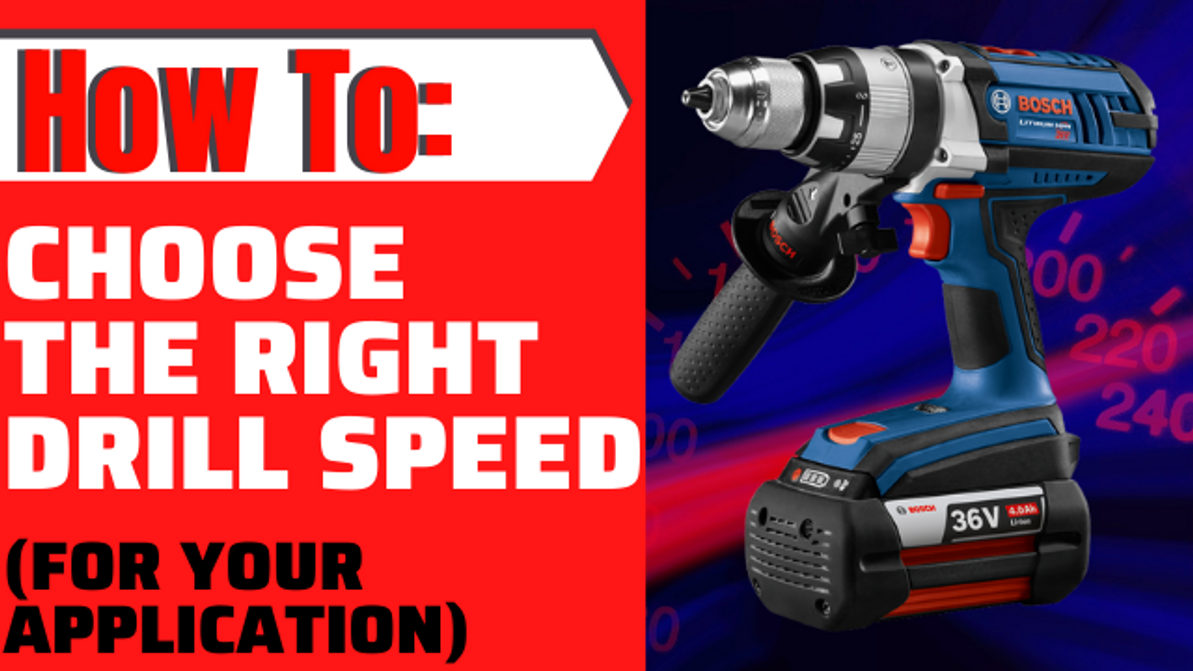Choosing Drill Speed
If you haven’t noticed, we quite enjoy the topic of power drills (check out our other drill-themed blog posts). Most drills have various speed settings. What are they for? Well, different circumstances require different drilling speeds (RPMs). You can find recommendations in guides, charts, on Google, etc. for speeds in regards to applications, but we think it’s more valuable to know what the different speeds are best used for (i.e. teach a man to fish).
Optimal Speed
Optimal speed or RPM is discovered when the owner can balance the life of the drill bit with the RPM without ruining what you’re drilling/driving. Some people don’t care too much about optimal speed and instead look for the fastest way to do something aka their drilling speed is always on high. This could lead to burning through drill bits, wrecking materials, stripping screws, and other costly consequences.
Material
Speed causes friction and friction causes heat. Heat can compromise the material of what you’re drilling into, example: warped plastic or even burning wood. When considering what speed to use, determine what you’re drilling into. Can it handle a high friction or does it need a slower speed? When looking at the material you’re drilling, how hard is it? Different hardness will mean different temperaments.
Harder materials generally require slower drilling because they also need more torque. On the contrary of creating heat inside what’s being drilled, when going slower, this can cause the motor in the actual drill to get warmer. Make sure to watch for overheating in the drill when it comes to tougher materials.
On the opposite side, softer materials require much less torque, so drilling at a quicker speed is ideal.
Side note, we also hope you are not using the same bits for every material… the wrong bit and the wrong speed (done separately or together) can be the reason for wasted time and money. If you’re using the correct drill bit, the bit will be able to do its job more efficiently without needing as much speed.
Drill Bits
Speaking of bits, the size of the drill bit you’re using also should be considered when determining drill speed. The larger the bit, the more surface it touches, meaning more friction is being generated, which means a more likely chance of heating the material. When using a larger bit, don’t go as fast as using a smaller one and keep checking for material compromisation.
Screws
If you’re starting to get the pattern: tougher and bigger materials/bits need less speed and more torque, while softer and smaller materials/bits are opposite, it’s pretty much the same for screwdriving. Large screws require more torque = slower speed, small screws require less torque = higher speeds. Please note, drilling too fast can cause the screw itself to heat up, so keep monitoring your screws and materials.
In Conclusion
We hope our article helps you understand how to determine the proper drill speed you should be using based on your scenario. It’s always best to start at a slower RPM and gradually increase speed, rather than wreck either your bit or the material from going fast too soon. Adjust your speed as necessary. We realize not every screw, material, and/or power drill will suffer from heating from friction, we repeatedly mention it as a general caution that should always be taken. After you’d discovered what speeds work with what bits and materials, taken a written (or mental) note of it. This’ll help you next time you drill the same material or something similar.
Recent Posts
-
Bissett is Universally Compatible, See Why and How
With Bissett's over 600 fasteners, you're bound to find the perfect fastener for your tool. You're n …2021 Mar 16th -
How To Choose Safety Gloves
We love healthy hands at Edmonton Fasteners. We’re not a skincare shop (clearly) but we do off …2021 Mar 8th -
Three Easy Home Fixes with Gorilla Glue
Gorilla Glue is a household name because of one reason: it works. We carry Gorilla Glue at Edmonton …2021 Feb 2nd




